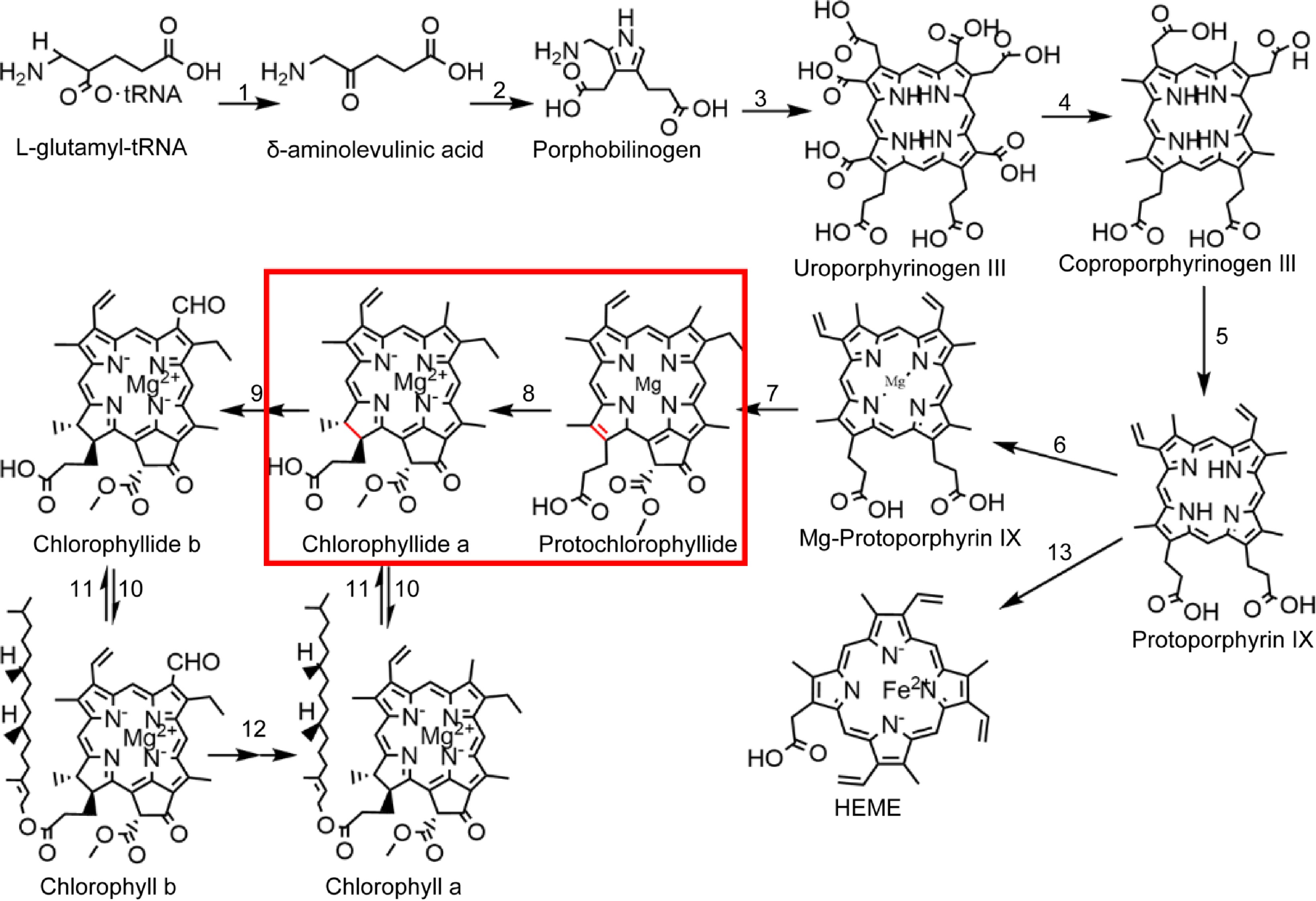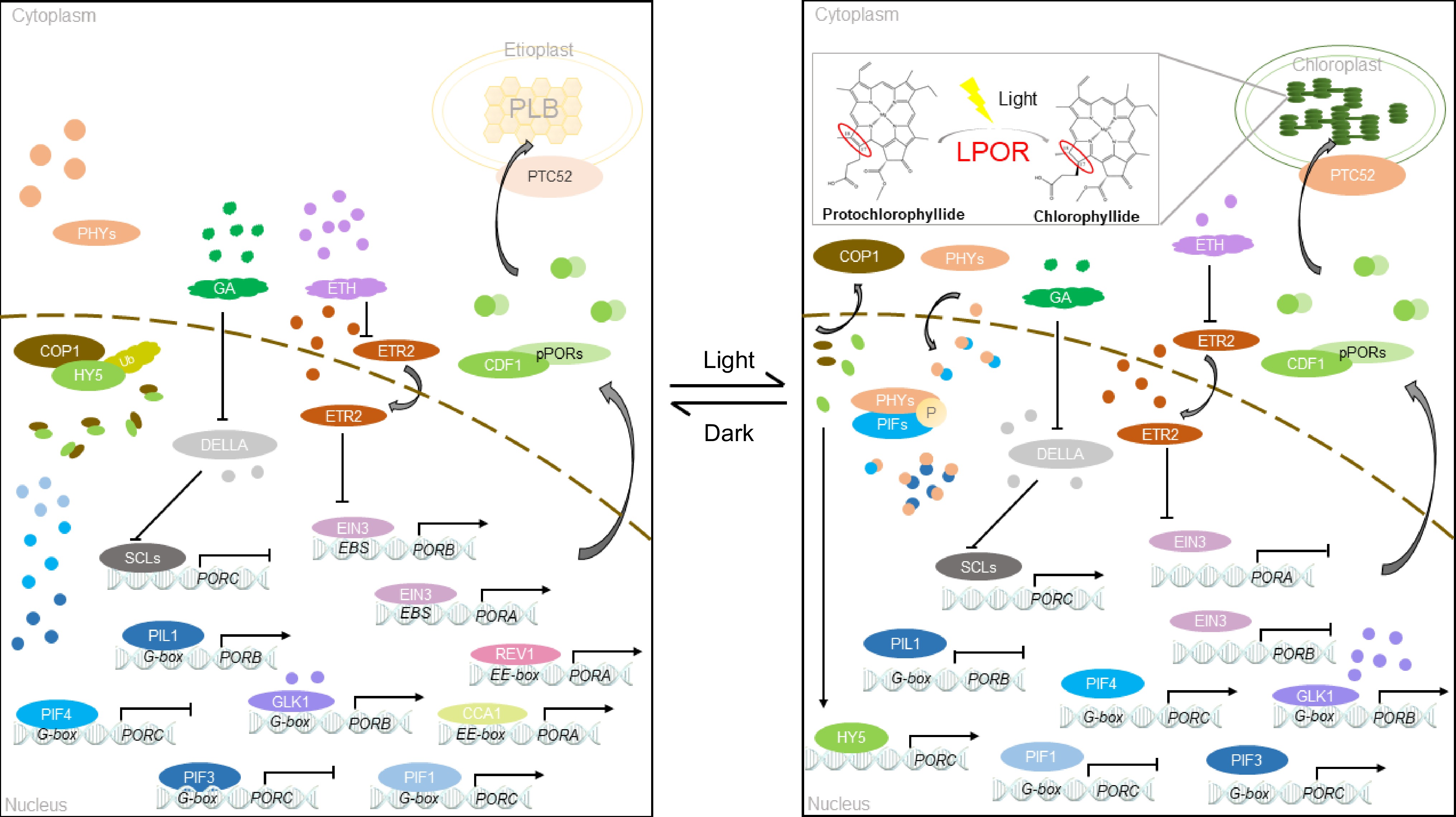-

Figure 1.
Chlorophyll biosynthesis pathway. 1: glutamine-tRNA reductase, 2: delta-amino ketones pentanoic acid dehydratase, 3: urinary porphyrins original III synthetase, 4: coproporphyrin III oxidase, 5: protoporphyrin oxidase, 6: Mg-chelating enzyme, 7: Mg-protoporphyrin IX methyltransferase, 8: the original chlorophyll acid ester oxidoreductase, 9: chlorophyll acid ester a oxygenase, 10: chlorophyll synthase, 11: chlorophyllase, 12: chlorophyllide a oxygenase, 13: ferrous chelase.
-

Figure 2.
The C17–C18 double bond of Pchlide is restored to chlorophyll by light.
-

Figure 3.
Regulatory networks of the PORA, PORB, and PORC genes in A. thaliana. Positive interactions are indicated by arrows, negative interactions by blunt ends, and the direction of protein movement by arched arrows. Helices represent mRNA, and ellipses represent proteins.
-
Abiotic stress Species Response to stress (transcript and protein expression and enzyme activity) Ref. Water Rice LPOR content decreases. [90] Salt/drought Peanut The expression of AhPORA is downregulated during drought and upregulated during postdrought recovery through AhGLK. [95] Rice LPOR activity is downregulated by 60% in salt-treated seedlings. [89] Chill Rice and LPOR activity is downregulated. [41] Corydalis bungeana Turcz. LPOR's transcript and protein content slightly decline at 4 °C but dramatically decrease at −4 °C with time. [96] Wheat and cucumber LPOR level is not reduced in light-exposed chill-stressed seedlings. [97] Heat Wheat and cucumber LPOR content is greatly reduced in response to light in heat-stressed seedlings. [97] Shade Camellia sinensis L. and soybean LPOR is significantly upregulated after shading, but downregulated by low R/FR ratio [93,98,99] Rice OsPORA expression is repressed by light, and OsPORB expression is rapidly upregulated by high-light treatment. [100] Table 1.
Effects of different stresses on the LPOR activity, protein, and transcription levels.
Figures
(3)
Tables
(1)